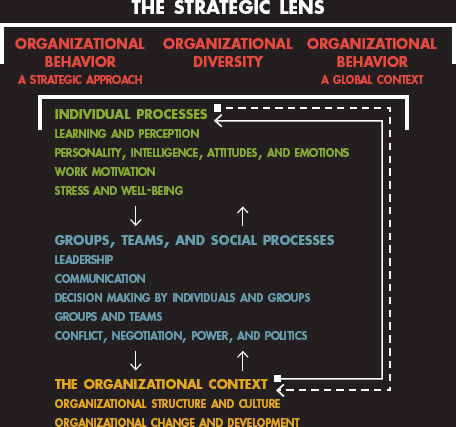Part IV. The Organizational Context

In the final part of the book, we examine the organizational context for the individual and group processes discussed in Parts II and III. Thus, we began the book with a chapter that presented the strategic lens for managing behavior in organizations, and we end with two chapters that explain the organizational processes and context for that behavior.
In Chapter 13, we discuss structure and organizational culture. The organization's structure can have a significant effect on behavior. Organizational culture is based on shared values in the organization. Therefore, the fit between individual values and organizational values is important. Organizational culture can significantly influence associates' and managers' behavior. It can affect individuals' motivation and attitudes as well as team processes such as leadership and conflict.
Chapter 14, the last chapter in the book, focuses on organizational change and development. Most organizations exist in dynamic environments requiring them to change regularly in order to adapt to environmental changes. Shifting environments also require that organizations develop flexibility in their strategies. Being flexible, however, necessitates taking an approach to change that associates and managers in the organization will accept. Most people dislike and resist change because of the uncertainty involved. This chapter ...
Get Organizational Behavior, Third Edition now with the O’Reilly learning platform.
O’Reilly members experience books, live events, courses curated by job role, and more from O’Reilly and nearly 200 top publishers.

